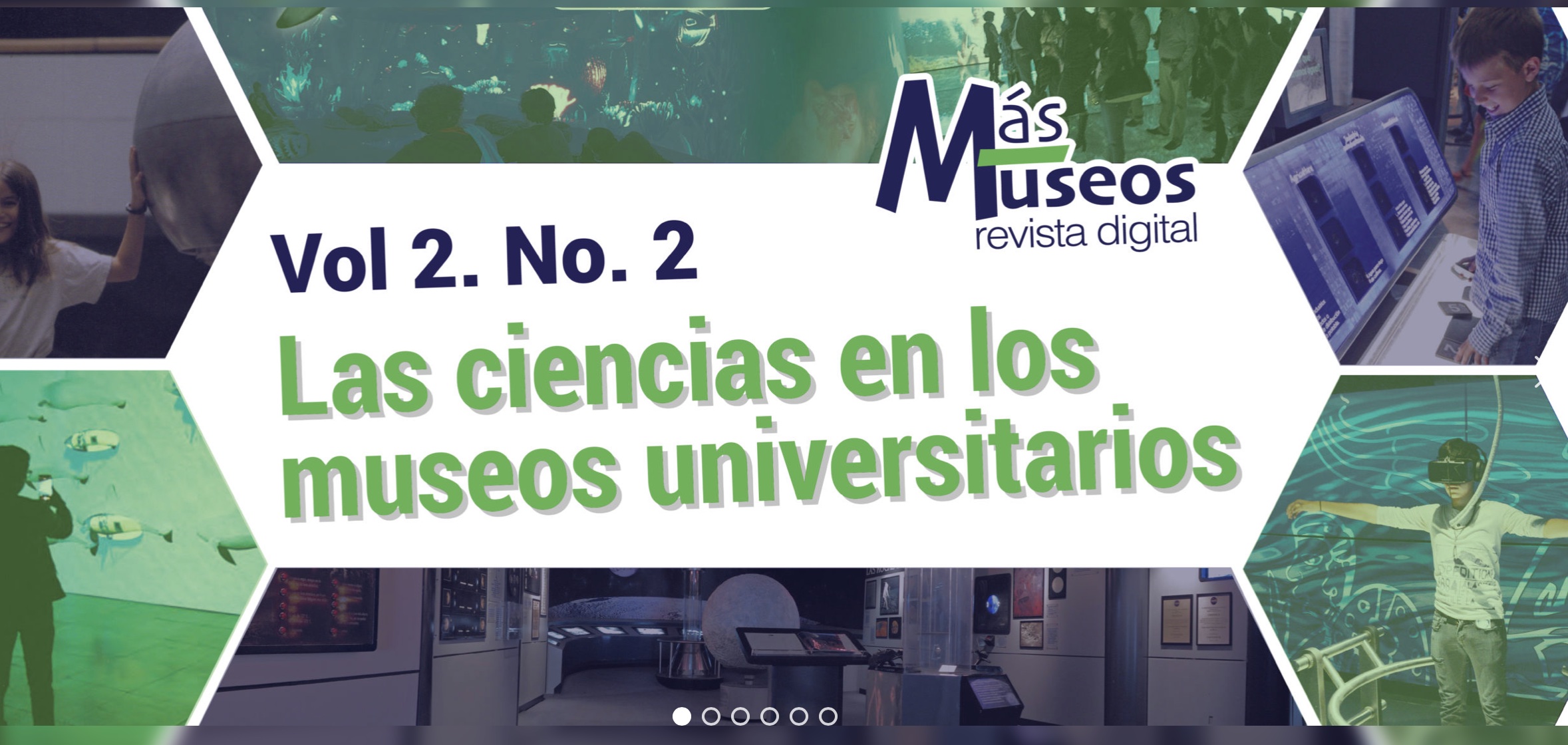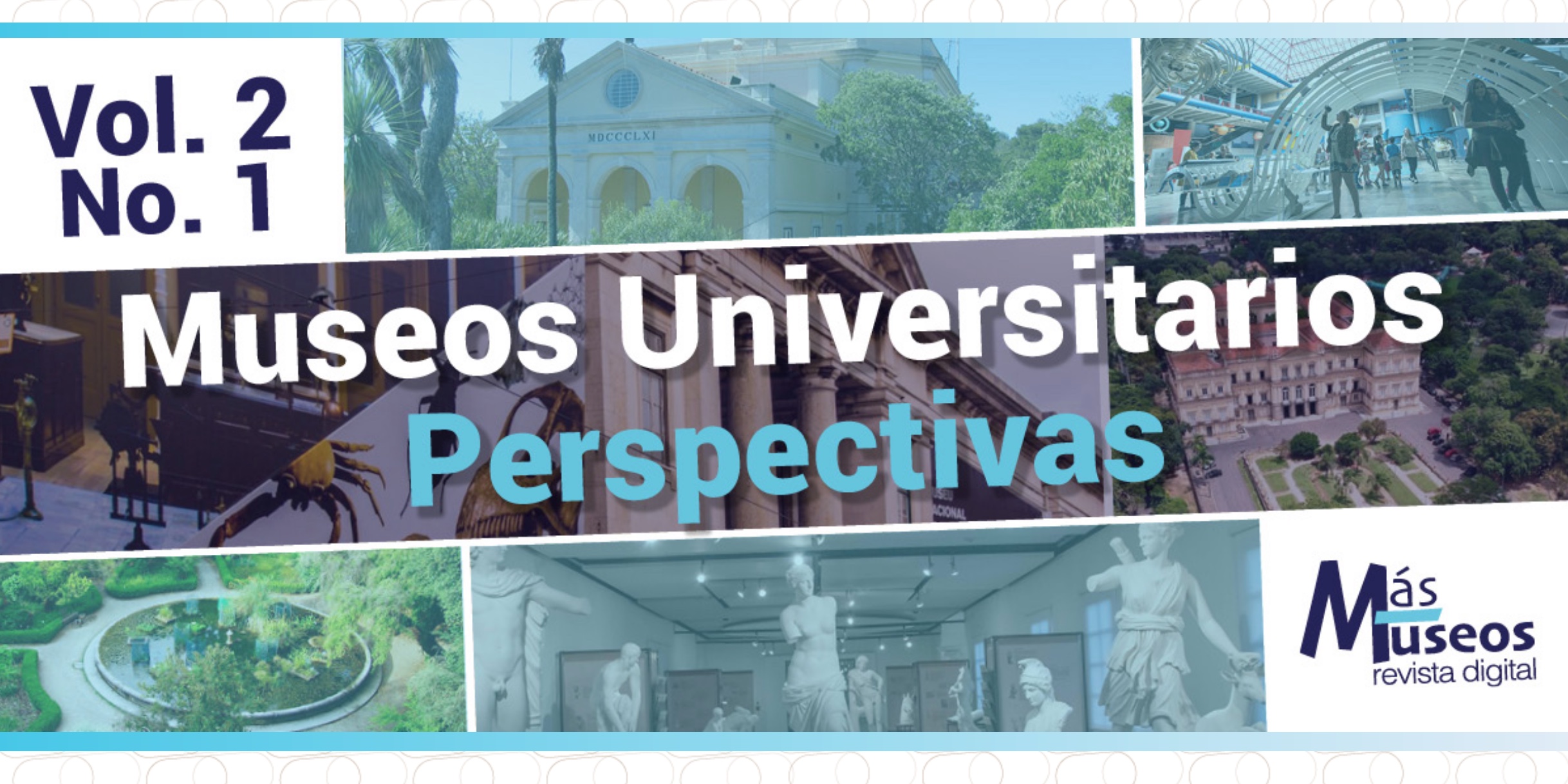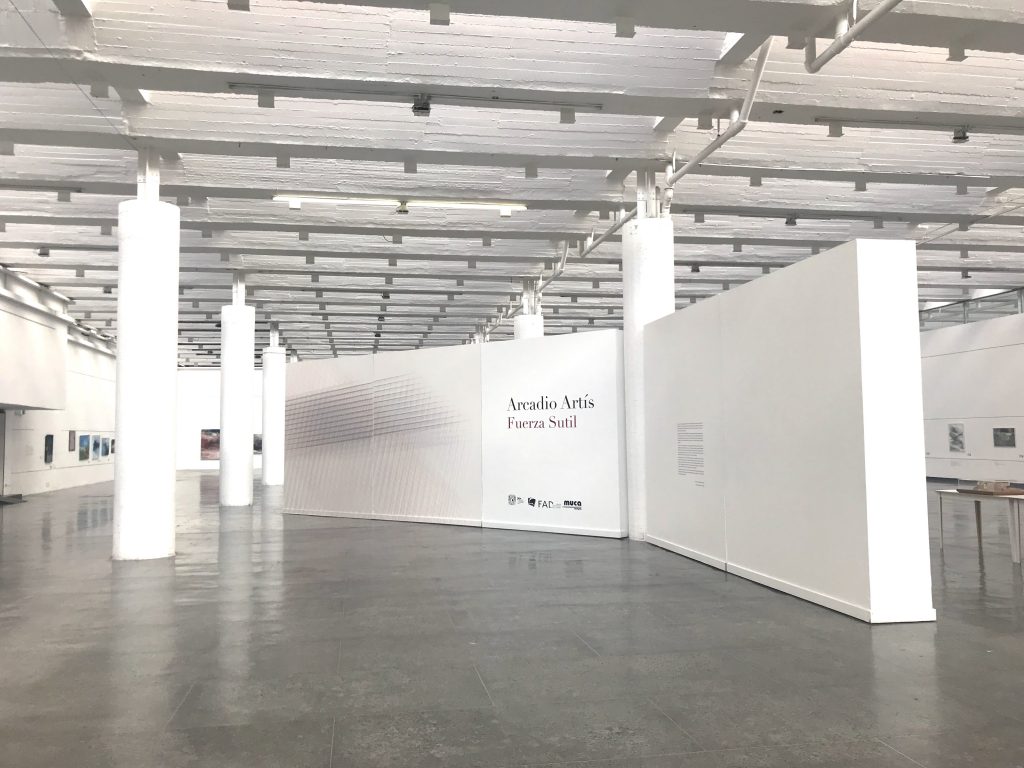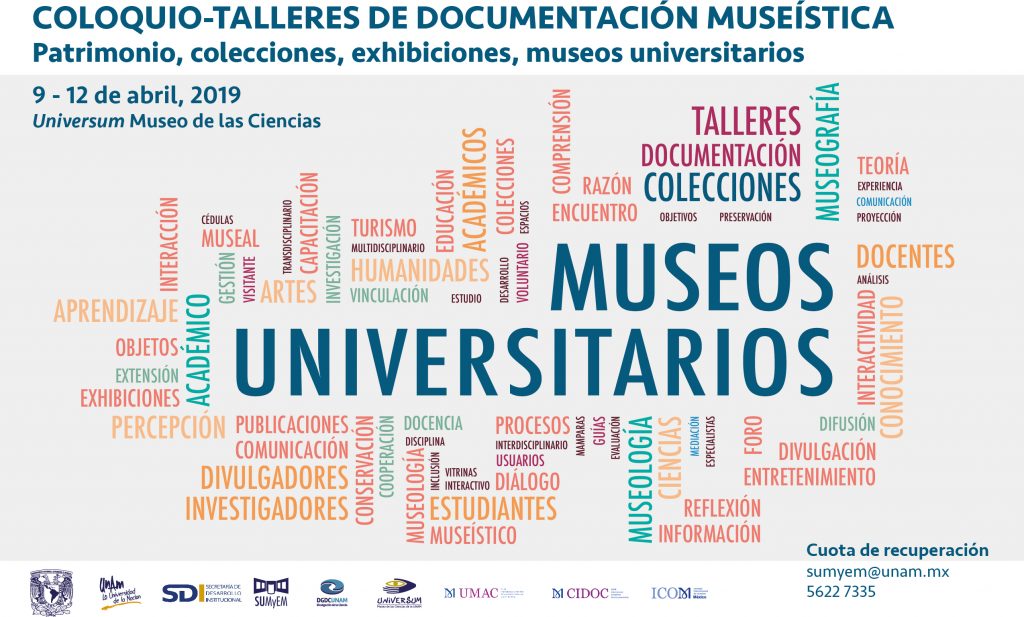
Continue reading here.

Continue reading here.
UMAC congratulates the Universidad Nacional Autónoma de México for another issue of the digital journal MÁS MUSEOS (Vol. 2, No. 1), just published.

This issue includes a lecture by UMAC Chair Marta C. Lourenço (in English with subtitles in Spanish), an article about the debates around the ICOM museum definition by Silvana Arago Telona, and so much more.
An issue to explore!

Universidad Nacional Autónoma de México (UNAM)
MUCA: UNIVERSITY MUSEUM OF SCIENCE AND ART Continue reading → “COLLECTION OF THE MONTH: MUCA, Universidad Nacional Autónoma de México”

UNAM (Universidad Nacional Autónoma de México) has a long and consolidated trajectory in terms of heritage, collections, exhibits, and museums. Not only since 1910, when the furniture and facilities of the old National Schools were attributed to the National University, or since 1929, when its activities are redefined and its assets are reassigned by the University Autonomy, moreover the relationship of our University with the national heritage goes back to 1825, when by presidential decree it was decided that the valuable prehispanic pieces were to be concentrated in “one of the classrooms of the University”.
Since then and up to this day, our University has played a lead role in Works related to the gathering, research, conservation, preservation, exhibition and dissemination of the country’s cultural and natural assets, promoting always close contact with national and international specialized agencies, which maintain it up to date in the museum and heritage movements worldwide. Simultaneously, UNAM has generated museum activities of its own that have marked it significantly. These began during the first half of the 20th century. Initially, with the appropriation of the Geology Museum (1929); later, by means of temporary exhibits presented in galleries in Mexico City’s city center.
Once UNAM was installed in the Coyoacán campus, it not only secured the preservation of cultural assets under its care but, stemming from an ample program of cultural dissemination it also created its own exhibition spaces, it developed novel exposition techniques and began conforming new archives that consolidated a great variety of topic collections, used in both teaching and research, and extension and dissemination. During this process it undertook the task of rehabilitating its historical buildings as museums and cultural centers.
To date, we have registered 26 museums and multiple museographic spaces that belong to UNAM created in different moments and circumstances. Its affiliation to different university agencies explains the diversity of objectives that they pursue. The difference in topics, goals, epistemological and dissemination approaches, more than hinder the collector and exposition activities, ratify the vitality of this important museum compound and confirm UNAM’s social projections in terms of its heritage, collections, exhibits, and museums.
For a long time, universities have worked in this aspect. However, there is still much to do, since in the las few years there has been a noticeable growth in collections, exhibits, and museums both at UNAM and other higher education institutions, that have increased the expositive contents, diversifying the concepts and ideas of heritage, and there has also been an important change in the uses of heritage spaces and assets. On the other hand, hypoconnectivity forces a reorganization and documentation of a lot of information on collections, exhibits, and museums to be undertaken to offer it to the public in the new consultation digital platforms. The aforementioned advises to revisit, update, and document that has been done so far and propose, stemming from a inter and transdisciplinary standpoints, new way of registering, integrating, documenting, and disseminating the assets and activities in museum terms.
In order to reach this, conducting encounters that gather specialists and people in charge of the heritage, the exhibits, and the museums of institution of higher education, becomes necessary; with the aim of reflecting on what has been done and the long-terms expectations and, mainly, to reach consensus that establish basic heritage documentation and museum activity standards.
Being aware of this situation, the University Seminar on Museums and Museographic Spaces (SUMyEM), the General Directorate of Dissemination of Science (DGDC), the General Directorate of University Heritage (DGPU), Universum Museum of Science, and the Panel of the International Comitee of Documentation (CIDOC) of ICOM-Mexico call on the university community and interested public to participate in this Colloquium.
To gather specialists and people responsible for cultural and natural heritage, collections, exhibits, and museums at UNAM and other institutions of higher education to dialog and reflect on the state of art in each of the topics, in order to propose strategies that improve its ordinance, preservation, management, and documentation and, along with it, its visibility in the cultural aspect.
Directed to: museum professionals, people responsible for collections, museographers, designers, teachers, museologists, heritage specialists, cultural managers, students of akin areas, and public interested in these topics.
Tuesday 9 to Friday 12, April 2019
Colloquium: 10-14 h; Workshops 16-19 h.
UNIVERSUM, Museum of Science, UNAM
University heritage:
The concepts of heritage have significantly varied in the last years in both local fields and at an international level, thanks to organizations such as ICOMOS, ICOM, UNESCO, that promote the protection of the cultural/natural, tangible/intangible assets, worldwide. As a matter of fact, the protection, conservation and dissemination of the heritage, collections, and university museums were formally settled in 2013 and 2015. However, the institutions of higher education, in addition to guarding the assets in their care, are constant producers of tangible and intangible assets. This leads us to analyze:
University collections:
Throughout history, universities, scientific and literary institutes, and centers of higher education have managed to gather a great number of collections -inherited, donated, bought, or elaborated for the specific purpose- in order to comply with the functions of teaching, research, dissemination, and extension of culture. Many of them are already located in museums. Nonetheless, they are still classified and catalogued stemming from their intrinsic or thematic characteristics, and do not respond to museological requirements. This diversity of archives leads us to analyze:
Permanent, temporary, and itinerary exhibits in museums and spaces of higher education:
Curatorships and museographic montages require a great conceptual, methodological, technical, and practical effort. They are cultural manifestations in themselves, that imply interdisciplinary and creative processes, frequently little known and undervalued. Given the singularity of each exhibit, registering in detail the different aspects that these maneuvers involve with the purpose if capitalizing the different museographical practices, becomes necessary. This leads us to analyze:
Throughout the 20th century, universities and institutes have undertook the task of establishing museums and exhibition spaces with different objectives and purposes. But many have not managed to subsist and have been forced to close their doors. The lack of horizontal and transversal perspectives on their operation and the activities they perform, and, above all, the lack of thorough registries on the works performed renders them very vulnerable. This leads us to analyze: